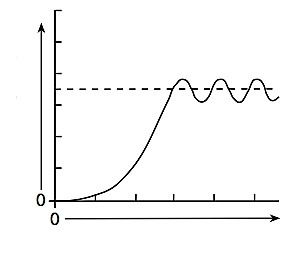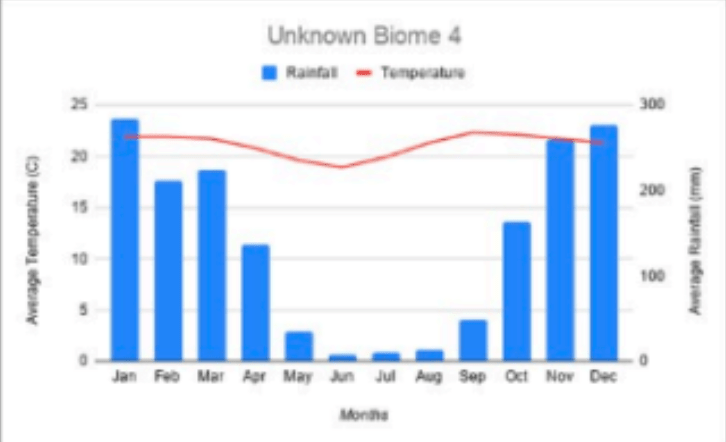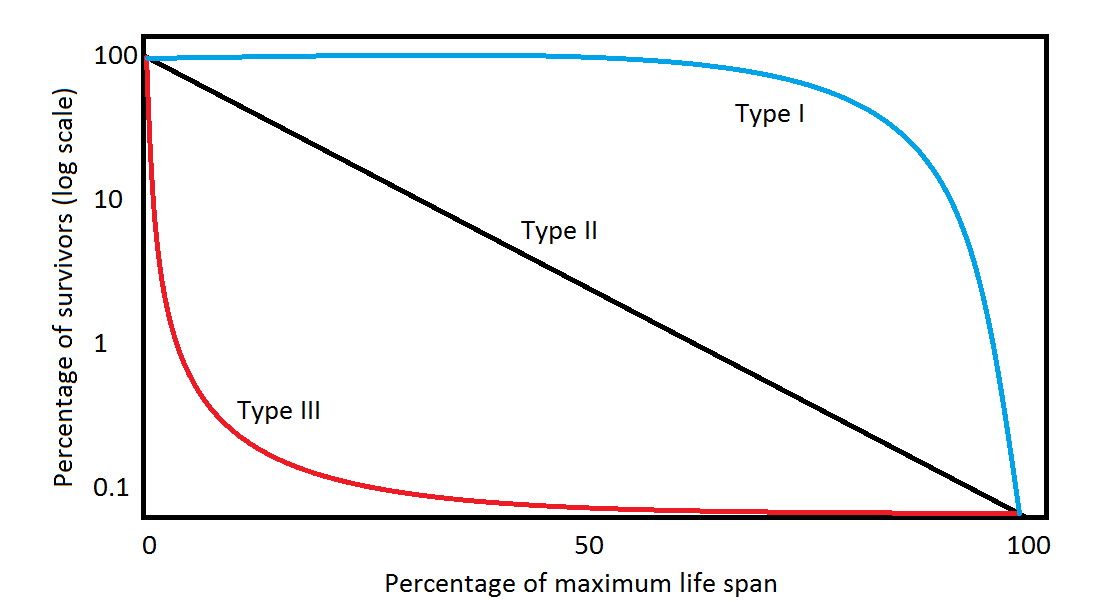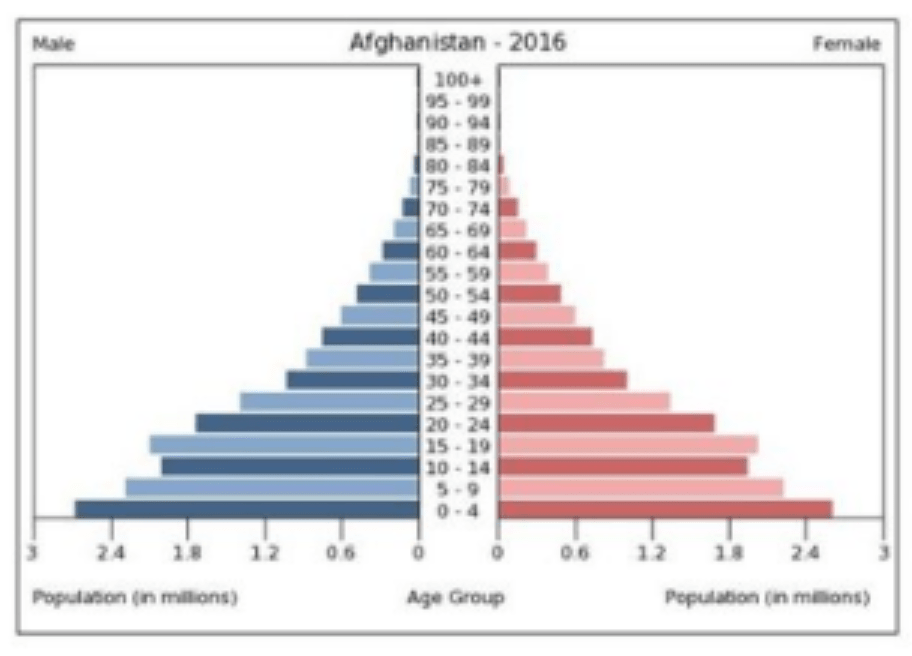This color ends in "urple"
What is purple?
Define species richness.
A food chain consists of grass, rabbits, and wolverines. This species would be the primary consumer in this food chain.
What does the dashed line on this graph represent?
What are the four main biogeochemical cycles to know about (from Unit 1)?
Nitrogen, Phosphorous, Carbon, Water
Describe one provisioning service that a forest ecosystem could provide.
Define species evenness.
the relative abundance or proportion of each species in the community
Tundra & Desert - they differ by their temperatures.
What type of reproductive strategists would elephants be considered?
K-strategists
Atmospheric carbon dioxide levels will increase due to a reduction in photosynthesis in the area.
Owls eat blue jays. If 50 joules of energy are available to blue jays at their trophic level, how many joules of energy would be available to Owls?
5 joules of energy
Name the 3 primary types of Biodiversity. (100 pts each)
Genetic, Species, Ecosystem
 Which biome does this Climatogram best represent?
Which biome does this Climatogram best represent?
Tropical Rainforest, warm temperatures and large amounts of rainfall in wet season
 What type of survivorship curve would insects commonly have?
What type of survivorship curve would insects commonly have?
Type III
In the nitrogen cycle, this is the process that removes nitrogen directly from its largest reservoir
What is Nitrogen fixing / Nitrogen fixation
This is a common pioneer species found during primary succession that helps break down bare rock and turn it into early soils.
What is moss / lichen?
Describe an area in which secondary succession would occur.
Describe an adaptation an organism would need to have to survive in an intertidal zone.
Which demographic transition stage is Afghanistan in based on this Age Structure Diagram?
Stage 2, (high birth rates, low death rates, population is increasing rapidly)
What is Eutrophication?
A population's crude birth rate is 20 (per 1000 people)
A population's crude death rate is 8 (per 1000 people)
The population's growth rate is...
1.2%! (20-8)/10
Density-dependent - competition for resources like food & shelter, disease spread, waste accumulation
Density-independent - Floods, Hurricanes, other natural disasters. Atmospheric pollution.
What is the equation for Primary Productivity?
NPP = GPP - R
These two stages in the demographic transition model show human populations as relatively stable
What are stages 1 and 4?
What are rocks and sediment?